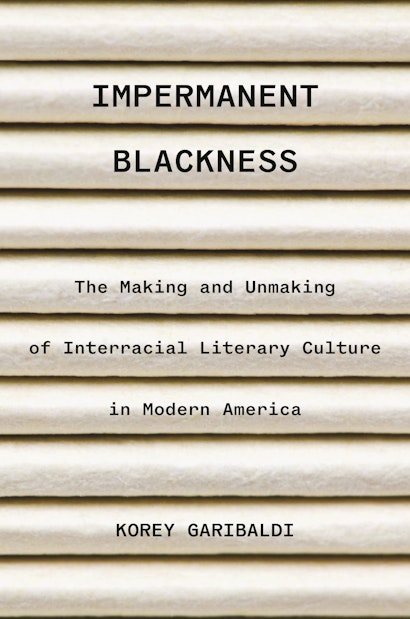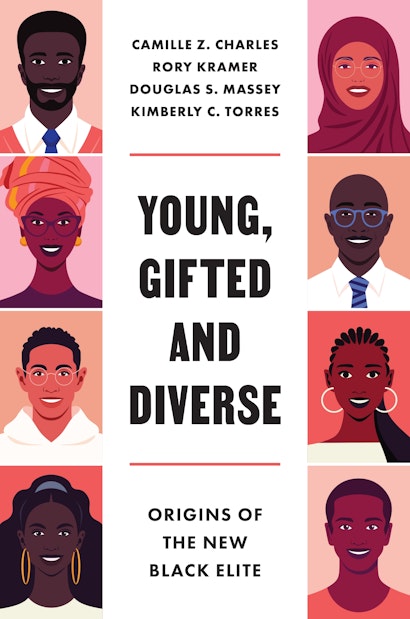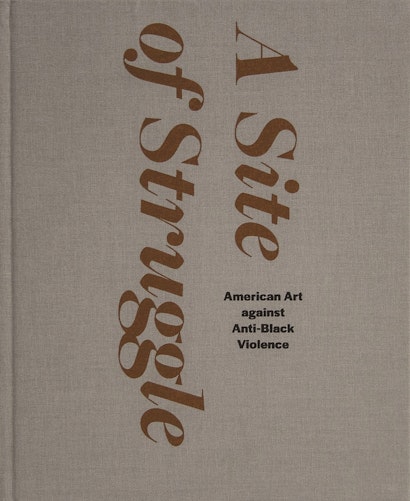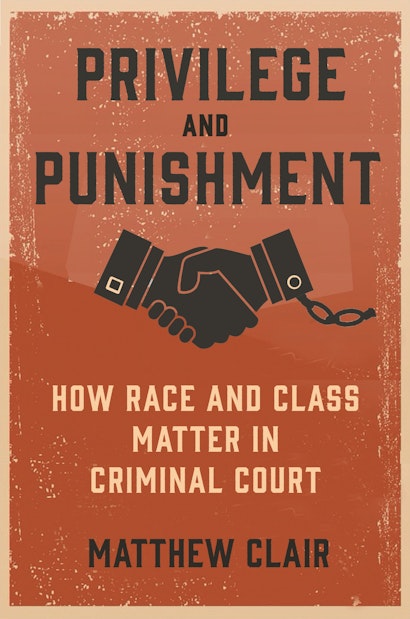For decades, ‘Blackness’ has been a crucial political and cultural category that grounds a public discourse on cherishing a robust historical tradition and systemically uprooting white supremacy. As the term popularizes as a catch-all, however, so proliferate assumptions, narratives, and stereotypes that obscure the diversity of Black lived experiences. This month, we asked a few of our authors the following question: What do you find is commonly misunderstood about Blackness in America? Our authors brought together a wealth of experience and research from the worlds of literature, higher education, art, and criminal justice to illuminate shades and contradictions within Blackness and to offer paths out of reductive generalizations. In honor of Black History Month, we present this composite of perspectives that invites us to embrace a complex and heterogenous understanding of Black life, culture, and politics.
Korey Garibaldi (Impermanent Blackness: The Making and Unmaking of Interracial Literary Culture in Modern America, 2023)
This is an exciting time to be reading and researching Black history and culture. Afrodiasporic authors that I study, including Alexandre Dumas père and Alexander Pushkin, monitored the arduous struggle for freedom in the antebellum U.S. and the global dimensions of Blackness. (Indeed, both mixed-race writers were fans of one another, and Dumas père wrote about Pushkin’s African great-grandfather, Abram Petrovich Gannibal, in the 1850s.) Several decades later, in 1936, Black scholar and diplomat Mercer Cook translated Dumas père’s biographical writing on Pushkin for the Afro-American, a piece of literary history that is little remembered in our own time. My research sheds new light on the sheer scale and impermanence of cultural interracialism, which has deep, transnational resonances in the twenty-first century.
In 1891, Pushkin’s granddaughter Countess Sophie of Merenberg married Russia’s Grand Duke Michael, the cousin of the tsar at that time. That year, scores of American newspapers reported, disparagingly, that there was now “Negro Blood in the Royal Court.” Other papers, such as Norfolk’s Virginian and Carolinian, described Merenberg as Grand Duke Michael’s “Negro wife,” despite how white her (immediate) ancestry was. After the Grand Duke’s mother discovered that her son had married Pushkin’s granddaughter, she suffered a heart attack, passing away soon thereafter. Grand Duke Michael was blamed for his mother’s death, and the tsar banished the newlyweds from Russia, for life. They settled abroad permanently, even after the tsar’s banishment was lifted.
Several years later, Grand Duke Michael penned a novel, Never Say Die (1908), based on the story of his courtship of, and marriage to, Pushkin’s granddaughter. This semi-fictional tale, which he dedicated to his wife, followed the exploits of a “clever” but “very lazy” prince who is nevertheless trained to become “an exceptionally good soldier.” Fittingly, this young prince finds himself smitten with a general’s daughter, who is neither royal nor aristocratic. Moreover, the Grand Duke Michael’s protagonist, styled after himself, leads a “quiet, studious life of a man fond of his military profession,” who disavows “the gaieties of his father’s court.”
The visibility of race is a myth. And yet it remains common for Americans to ignore, overlook, or forget that Black identity (and African ancestry) comes in all shades.
In real life, the Russian Grand Duke’s contemporaries had long fixated on his marital dynamic with Merenberg, who was labeled a commoner despite her noble ancestry. “As is always the case in love affairs,” Grand Duke Michael noted in his lightly veiled account of their marriage, “society was exceedingly interested, and a great deal of gossip ensued.” Paradoxically, in the Grand Duke’s fictionalized memoir, the young prince’s father assured his son that he “would dearly love” his newest muse, “for his daughter-in-law, even in spite of the fact that the marriage would not receive recognition at the court.” Such vignettes are poignant. But it is not surprising that Grand Duke Michael’s melodramatic novel has been forgotten. At the time, some critics questioned how appropriate this book was, given the highly publicized controversy surrounding his unsanctioned marriage to Gannibal’s great-great-great-granddaughter.
For decades, Countess Sophie of Merenberg and her heirs were subject to racially motivated attacks. What is striking is that African American writers and publications—including the NAACP’s Crisis magazine, James Weldon Johnson, and numerous others—were consistent in defending Pushkin’s aristocratic descendants from “scientific” racism. The erasure of this cultural history from our collective memory is emblematic of broader misunderstandings about Blackness. The visibility of race is a myth. And yet it remains common for Americans to ignore, overlook, or forget that Black identity (and African ancestry) comes in all shades. Too often, people are taught that European heritage is synonymous with whiteness. We need more narratives of the past that defy tenacious stereotypes and pernicious biases like these that haunt the present.
Douglas S. Massey, Rory Kramer, & Camille Z. Charles (Young, Gifted and Diverse: Origins of the New Black Elite, 2022)
In the US, Blackness was historically constructed as what sociologists call a “master status,” one in which any evidence of African ancestry defined one as “Black” and inferior, overriding all other individual traits and characteristics, erasing all differences between people labeled as Black. Black inferiority was built into the formal and informal structure of U.S. society and American social cognition, both implicitly and explicitly. African Americans, of course, contested this status, as did some White people. Little progress was made until the Civil Rights era of the 1960s and 1970s, and by most measures we still have quite a way to go.
The US Black population has always been diverse, even while enslaved, and that diversity has only grown in recent decades. As Blacks entered into sectors of American society from which they had long been excluded, they sought to redefine their place in the emerging post-Civil Rights social order. The Black middle class grew, and a new Black elite expanded. More recently, immigration from Africa and the Caribbean increased, as did rates of interracial partnering. There have also been modest steps toward the integration of schools and neighborhoods.
These sociodemographic shifts have increased and intensified intraracial diversity along the lines of race, class and gender, and also with respect to origins (mixed versus monoracial), immigrant generation (first, second, or multigenerational native), region of origin (parents from Africa, the Caribbean, or the US), segregation (childhood spent in Black, Mixed, or predominantly White settings), skin tone, and degree of exposure to disadvantaged circumstances.
Given the diversity among Black Americans today, any assumptions we make about the origins, experiences, and characteristics of someone you perceive as Black are likely to be wrong.
The increasing diversity of the Black population in the US—and the manifold intersectionalities that result—is the subject of our research. Drawing on a representative, longitudinal survey of Black students at selective colleges and universities and dozens of in-depth interviews, we show how diversity along these lines conditions experiences and outcomes with respect to identity, upbringing, academics, social life, prejudice and discrimination, attitudes, stress and mental health, and ultimately academic achievement and attainment.
Despite all the foregoing diversity—far more, in fact, than amongst students of other races—respondents lamented a singular, static image of “Blackness” replete with negative stereotypes against which they were constantly judged, not only by faculty, strangers and their institutions, but by their peers as well. Our findings emphasize that there is no single, “authentic” Black identity or experience. Nonetheless, a true sense of racial solidarity exists in spite of great intragroup diversity, resulting from a shared experience of being reduced to outdated notions of Blackness.
If there is one thing we’d like to impress upon people, it is that, given the diversity among Black Americans today, any assumptions we make about the origins, experiences, and characteristics of someone we perceive as Black are likely to be wrong. This is true not only in our day-to-day interactions, but also for the design and execution of programs within and outside of higher education needed to promote and support today’s manifold diversities.
Janet Dees (A Site of Struggle: American Art against Anti-Black Violence, 2022)
As an art historian and a curator, I am interested in the role of the arts in the conversation surrounding racial justice. In my most recent project, I focused on excavating and presenting a historical perspective on artistic production that grappled with the issue of anti-Black violence in the United States. Focusing on the period between the rise of anti-lynching activism in the late 19th century and the founding of Black Lives Matter in 2013, a portion of my research explores creative counterpoints to the assault of images of anti-Black violence that have been an enduring part of the American cultural landscape.
Art has not only been a vehicle for overtly supporting activism through protest-oriented work. It has additionally engaged in the conversation around racial justice in more subtle and complex ways, as an expression of mourning and memorialization and as a mode of processing the emotional and psychological impacts of racism. Art can serve as both an example and an embrace for those of us whose lives are impacted daily by racial injustice, as well as a catalyst for sustained action. Art does not necessarily directly change things, but art can change people, and people change things. In providing a window unto perspectives that may be different from our own, it cultivates empathy; by being a mirror of our own or similar experiences, it provides solace.
Another misunderstanding about “Blackness” in America is that the histories, struggles, and concerns of Black people should be “contained” rather than being seen as integral to the understanding of American history, culture, and society writ large.
An engagement with art and art history can illuminate the diversity and complexity of identities, interests, viewpoints, and contexts (gendered, geographical, social, religious, cultural, political, economic, etc.) that can be obscured by a mono-dimensional understanding of “Blackness” in America. In the realm of art, this can be as straightforward as understanding that artists who identify as Black have practiced and developed a range of artistic approaches from conceptualism to non-objective abstraction to figuration. Artists are shaped by various aspects of their identity, intellectual interests, and creative commitments. “Blackness,” however construed, may or may not be the best primary lens through which to engage their work.
Another misunderstanding about “Blackness” in America is that the histories, struggles, and concerns of Black people should be “contained” rather than being seen as integral to the understanding of American history, culture, and society writ large. In my research on art against anti-Black violence for example, I explored how artists from different cultural and racialized backgrounds—African American, Euro-American, Mexican American, Japanese American—took up this issue. Several works by artists as diverse as Reginald Marsh and Kerry James Marshall explore how perpetrators and bystanders are socialized into attitudes of anti-Blackness that are shared and passed down.
Art also can penetrate spaces and places that activist messages may not reach. This was what the NAACP’s Walter White hoped for in 1935 when he organized the exhibition An Art Commentary on Lynching to build awareness and support for anti-lynching legislation. It is also what I and my colleagues bore witness to at the Block Museum of Art, Northwestern University and Montgomery Museum of Fine Arts, when the exhibition A Site of Struggle was on view in 2022.
Art is a space of creativity and imagination and, as such, offers fertile ground to envision what a just future society would like. Writer and meditation teacher Kate Johnson has put it this way: “The artists within and amongst us know how to make that vision of liberation visible so we can share it.” Art can give form to what we are fighting for, as well as deconstruct what we are fighting against.
Matthew Clair (Privilege and Punishment: How Race and Class Matter in Criminal Court, 2022)
In the United States, a persistent cultural stereotype has long conflated Blackness with criminality. Writing at the end of the nineteenth century, W. E. B. Du Bois remarked that the study of the “Negro problem” for many White Southerners was really an investigation into what they perceived to be the problems of “ignorance, crime, and social degradation.” Today, the stereotype persists, with deadly consequences. Jennifer Eberhardt, a social psychologist, has conducted several experimental studies showing not only that Blackness is associated with criminality but also that the concept of crime triggers an association with Black people. In one experimental study, she and her colleagues showed how being primed with crime-relevant words, such as “violent,” caused police officers to attend more closely to Black men’s faces; police officers were also more likely to suggest that Black men’s faces appeared more “criminal” than those of White men.
People from all racial and class backgrounds engage in criminalizable behaviors; the difference is that anti-Black stereotypes about criminality and worthiness structure crime’s meaning and the way it is policed.
The stereotype of Black criminality is also perpetuated through academic knowledge and stylized facts. In the Condemnation of Blackness, historian Khalil Gibran Muhammad writes that “crime statistics became an innovative and scientific way of communicating the inferiority and pathologies of Black people after slavery.” Even the work of well-meaning academics today can perpetuate the myth. So much social science research on crime and inequality begins from the assumption of Black criminality, seeking, for instance, to locate the causes of observed Black-White disparities in crime rates in the pathologies of Black neighborhoods and communities. My work on criminalization begins from a different assumption. I examine how social and cultural processes within state institutions, rather than Black communities, disproportionately criminalize certain groups and manufacture crime statistics.
For example, in the first chapter of my book Privilege and Punishment, I argue that people from all racial and class backgrounds engage in criminalizable behaviors; the difference is that anti-Black stereotypes about criminality and worthiness structure crime’s meaning and the way it is policed. Black and Latino people in the study who grew up in working-class and poor homes often recounted the constant presence of police in their neighborhoods. Meanwhile, middle-class and White working-class people in the study described a lack of police surveillance, and when they were stopped by the police, many reported being viewed as credible (even when they were engaged in criminalizable acts). Some benefited from social ties with police officers in their community that allowed them to avoid arrests and investigations. Still, White and privileged people in my study engaged in substance use behaviors and physical violence that often harmed themselves, loved ones, and strangers. The myth of Black criminality not only perpetuates state violence against Black communities but also leaves social problems in White communities uninterrogated.
This exchange was facilitated by Akhil Jonnalagadda as part of the Princeton University Press Publishing Fellowship program.



